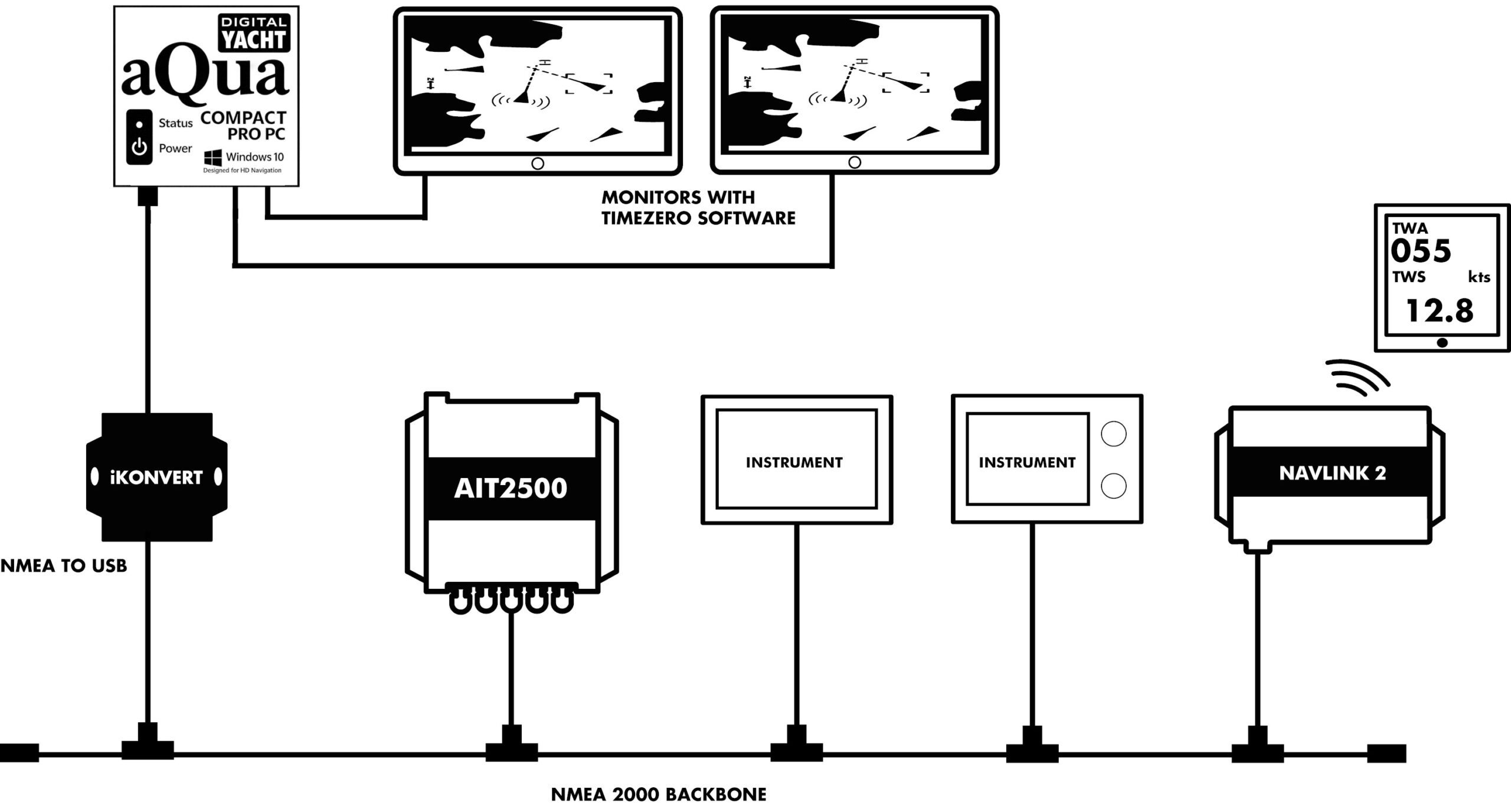Thinking about adding a PC to your boat? Digital Yacht’s new Aqua Compact Pro marine PC really does fit in the palm of your hand! Space is always at a premium on board and despite its slim line 11.5 x 11 x 5 cm dimensions, the Aqua PC packs in a powerful Intel Core i3 processor with exceptional graphics performance for the latest 3D charting and HD navigation programs. It’s the perfect partner for applications like SmarterTrack or Maxsea TimeZero – even with radar and 3D overlays.
Aqua Compact Pro
1680,00€
“A super compact, ultra reliable marine PC with powerful Intel processor i3, 240GB solid state hard drive and direct DC operation – ideal for use with demanding 3D navigation programs.”
KEY FEATURES

So why a PC on board? The number one, compelling reason to add a PC to your boat’s navigation and communication system is amazing value. Equipped with navigation software, a PC turns into a full function chart plotter. A PC also offers more powerful functionality than a dedicated MFD with the ability to install software for lots of applications from navigation to entertainment, email communications, weather and internet connectivity. PCs are also up-dateable as new applications become available.
The Aqua Compact Pro utilises the latest Intel Core i3 processor for modern 3D charting and radar overlay applications. Its fitted with 8GB ram and has plenty of connectivity with built in wifi blue tooth and SD Card reader plus 4 x USB 3 sockets
SPECIFICATIONS
- The perfect solution for demanding navigation applications like MaxSea/Nobeltec TimeZero
- Direct 12v DC Operation (8-19v input), approx 20W power consumption
- i3 processor
- 8GB DDR4 2133MHz SO-DIMM memory and super fast 240GB solid state drive
- Three display outputs – full size HDMI and USB C
- Bluetooth 4.2 and Dual Band WiFi built in (plus wired gigabit network port)
- 4 x USB 3 ports with charging mode on front panel port
- Front panel mounted audio jack for audio in/out – ideal as media center
- Windows 11 operating system
- Built in mic for Cortana speech control and recognition – voice control is here!
- Micro SD slot – ideal for Navionic’s cards with our SmarterTrack PC navigation software
- Just 115mm x 110mm x 50mm
- Easy installation with supplied mounting bracket
- LINUX or Windows 8 OS option at no extra charge
| Weight | 998 g |
|---|---|
| Dimensions | 245 × 165 × 100 mm |
Aqua Compact Pro V3 01 Eng Pdf
649.99 KBAqua Compact Pro 10th Gen Latest User Manual (English)
The Aqua PC range uses a 10-30v DC system only so if you want to run at home you will need a 220v AC to 12v DC adaptor. These should be available at any electrical supplier.
Depending upon the model of Aqua PC you have, you will need a power supply that can provide up to 5 Amps of current at 12v.
They are simply not designed for the hostile marine environment with constant vibrations and momentum from the boat and of course they’re not designed for salty air. Laptops also consume large amounts of power and often you will need an inverter or adaptor to connect to the boat’s DC supply which introduces more losses and electrical noise. It’s a much neater solution to have a dedicated PC and display both in terms of functionality and reliability. With some simple engineering, you can install a monitor to swivel between chart table and saloon so it can become an entertainment as well as a navigation device.
The Aqua range of PCs from Digital Yacht are designed to be permanently installed and can connect direct to the boats DC electrical system. They consume minimal power and are completely solid state with no moving parts. Despite their impressive performance they are as affordable as a good quality laptop and can support multiple monitors.
A normal hard drive on a PC consists of several moving parts. Not only do these consume more power to run, but they are very sensitive to motion as all the parts must work in exact synchronisation in order for the data to be read, meaning a hard drive is not ideally suited for use on a pitching boat in heavy seas.
A solid-state drive has no moving parts at all – data is stored in Flash memory. As there are no moving parts, a solid-state drive consumes less power and performs well under all sea conditions.
 Europe
Europe United Kingdom
United Kingdom United States
United States France
France Germany
Germany Australia
Australia Spain
Spain









